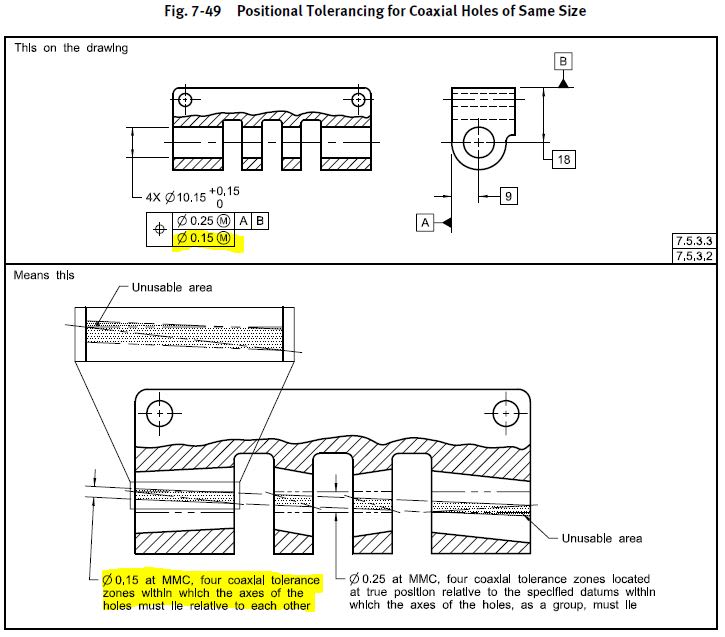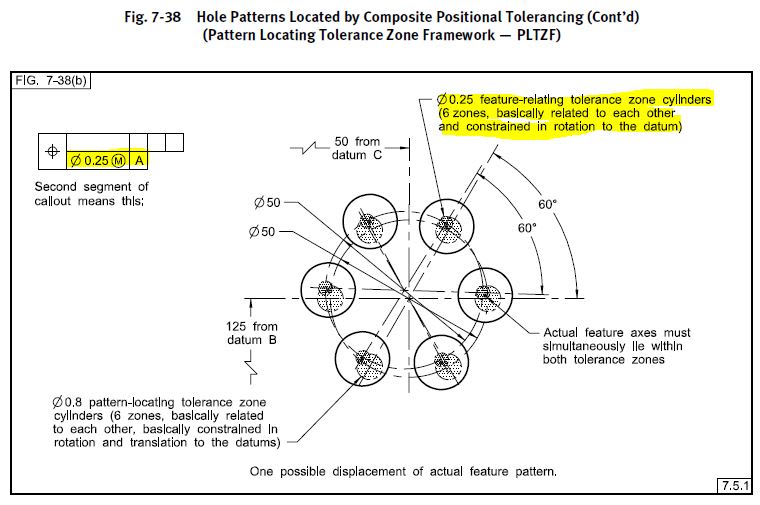dthom0425
Mechanical
- Dec 6, 2018
- 47
Hi all,
See attached picture.
This is just a quick model that I through together for discussion. With this part, I made the pattern of those two bosses datum feature A - reason being is that these features would be the first features to interface to the receiving part. Datum feature B would be the flat face.
In looking at the positional tolerance feature control frame, I guess I'm being thrown off. With no datum feature references in the feature control frame, what does the positional tolerance actually mean? Is it just controlling the form?
Thanks
See attached picture.
This is just a quick model that I through together for discussion. With this part, I made the pattern of those two bosses datum feature A - reason being is that these features would be the first features to interface to the receiving part. Datum feature B would be the flat face.
In looking at the positional tolerance feature control frame, I guess I'm being thrown off. With no datum feature references in the feature control frame, what does the positional tolerance actually mean? Is it just controlling the form?
Thanks



